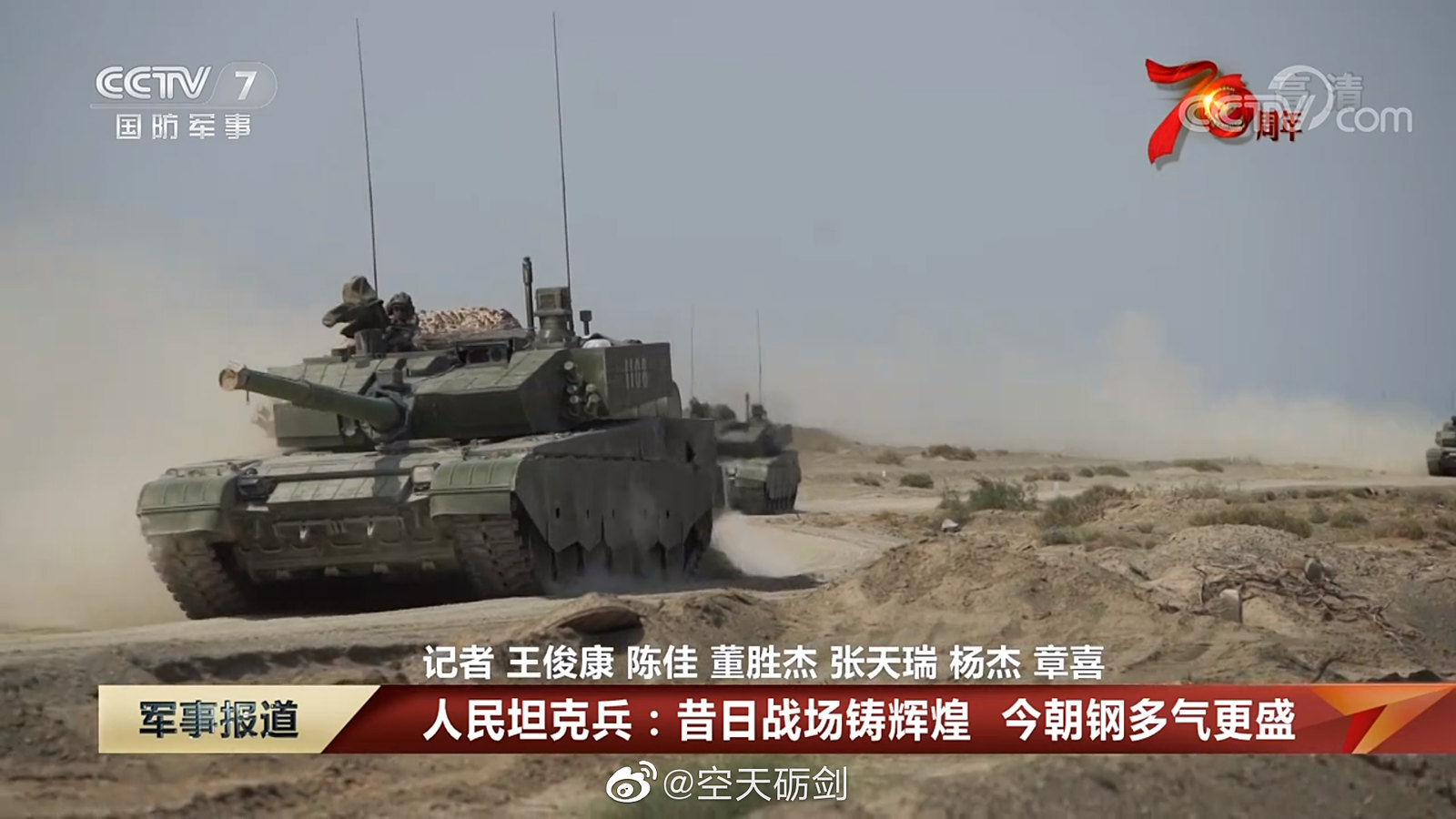After all ZTZ99A was designed nearly 20 years ago.
The 54 caliber gun (as posted in berserk's reply above) was tested but never put into production because the PLA found it unneccessary.
99A was once planned to have some 1000mm armor and a 54 caliber gun because back in the 2000s the designer thought it would need to counter 4th Gen. MBTs. However it turned out that the development of MBTs significantly slowed down globally after the Cold War and 99A's opponents are more likely to be current 3rd Gen. MBTs, so the target requirement was reduced.
ZPT-98 is still a 48 caliber gun.The problem with the ZTZ-99 is more obvious if you look at its turret geometry in comparison to the ZTQ-15. The ZTQ-15 has far superior frontal side armor, while the ZTZ-99 seems more designed for defensive operations as its turret can't really maneuver without exposing the thin frontal side armor (and more importantly, the section underneath the smoke launchers) to enemy fire.
You have to remember, the ZTZ-99A is a late 90s / early 00s design, while the ZTQ-15 is a more modern design for the 21st century. The ZTZ-99A is not going to be improved much further; its successor will likely be more in the vein of Armata than just an up-armored / up-gunned ZTZ-99A.
And claims that the ZTZ-99A's gun penetration is bad are likely false. The ZPT-98 is a 50 caliber gun, the 2A46 and its descendants are 48 caliber guns, meaning that the ZPT-98, using similar ammunition, should achieve higher barrel energies than the 2A46.
The ZTZ-99A2, on the other hand, is using a new gun and autoloader system with ability to support 1-piece ammunition that the ZTZ-99 and T-90s can't. The caliber, likewise, is now 52, making it theoretically superior to the ZPT-98 and increasing its performance further vs the T-90.
===
Where Chinese tank design really shines is with the engine. Chinese tanks tend to have far better power to weight ratios than Russian-manufactured tanks, which grant better strategic mobility. The ZTZ-99 line is between 24-27 HP / ton, which puts it in the Leclerc range in terms of power to weight, almost to the level of the ZTQ-15 / VT5 light tanks. The older T-90s are in the 18 HP / ton range, the newer T-90s are around the 23.5 HP / ton range.
Of course, if you look at the Armata, that's in the 31 HP / ton range but that's a next-generation tank on a whole different paradigm.
The 54 caliber gun (as posted in berserk's reply above) was tested but never put into production because the PLA found it unneccessary.
99A was once planned to have some 1000mm armor and a 54 caliber gun because back in the 2000s the designer thought it would need to counter 4th Gen. MBTs. However it turned out that the development of MBTs significantly slowed down globally after the Cold War and 99A's opponents are more likely to be current 3rd Gen. MBTs, so the target requirement was reduced.










